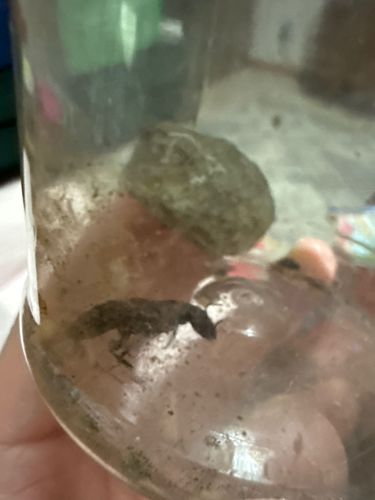Dragonfly Nymph (Larva)
Scientific Name: Odonata (suborder Anisoptera) larvae
Order & Family: Order Odonata, Suborder Anisoptera (various families)
Size: Typically 1 to 5 cm (0.4 to 2 inches) in length, depending on the species and developmental stage.

Natural Habitat
Aquatic environments, including ponds, lakes, slow-moving rivers, and wetlands. They prefer clear, unpolluted water with ample vegetation for camouflage and hunting.
Diet & Feeding
Predatory. They are opportunistic hunters, feeding on a variety of small aquatic invertebrates such as mosquito larvae, mayfly nymphs, and small crustaceans. Larger nymphs may also eat tadpoles or small fish.
Behavior Patterns
Dragonfly nymphs are ambush predators, often camouflaged among debris or vegetation at the bottom of their aquatic habitat. They use a unique retractable labium (lower lip) to snap and capture prey. They undergo several molts (instars) before emerging from the water as adult dragonflies. Their development can take months to several years depending on the species and environmental conditions.
Risks & Benefits
Benefits: They play a crucial role in controlling populations of other aquatic insects, including mosquito larvae, thus acting as natural pest control. They are also an important food source for fish and other aquatic animals. Risks: None to humans. They are not harmful or venomous.
Identified on: 10/16/2025